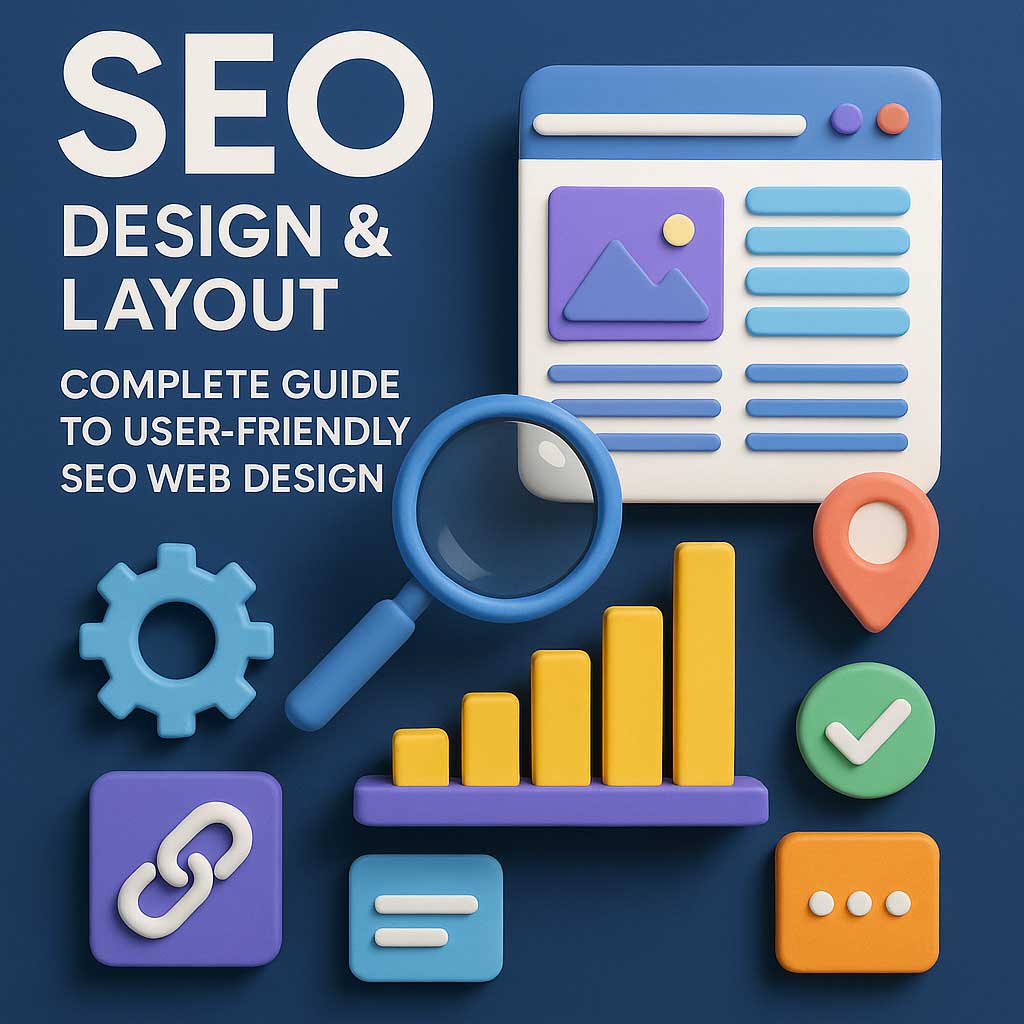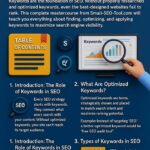SEO Design & SEO Layout: Complete Course
Search engines don’t just care about keywords and backlinks — they also evaluate how your website is designed and structured. A website’s design and layout directly influence SEO rankings, bounce rate, user experience (UX), and conversions.
This mastercourse from Small-SEO-Tool.com teaches you how to build SEO-friendly websites with the right design principles, layouts, and tools.
You will Learn
- Introduction to SEO & Web Design
- Why Design & Layout Matter for SEO
- Google’s Ranking Factors Related to Design
- The Role of User Experience (UX)
- Site Structure & Navigation Best Practices
- Mobile-First Design Principles
- Responsive Layouts for SEO
- Website Speed & Performance Optimization
- SEO-Friendly Design Elements
- Typography & Readability for SEO
- White Space, Colors & SEO Engagement
- Calls-to-Action (CTA) Placement
- Internal Linking Strategy in Layout
- Header Tags (H1, H2, H3) & Content Layout
- Footer Optimization for SEO
- Sidebar & Widget Placement Best Practices
- SEO & Multimedia Design (Images, Videos)
- Image Optimization & Layout SEO
- Above the Fold vs. Below the Fold Design
- Layout Mistakes That Hurt SEO
- Conversion-Driven SEO Layouts
- Accessibility in SEO Web Design
- Page Templates for SEO (Home, Blog, E-commerce)
- Tools for SEO-Friendly Web Design (Small-SEO-Tool.com)
- Case Studies: SEO Wins with Design Tweaks
- Advanced Tips: AI, Voice Search & Layout SEO
- SEO Web Design Checklist for 2025

1. Introduction to SEO & Web Design
SEO and web design are interconnected. While SEO focuses on keywords, links, and rankings, design ensures visitors stay, engage, and convert. Google rewards sites that balance both.
2. Why Design & Layout Matter for SEO
- Poor design = high bounce rate = lower rankings.
- Good layout = better dwell time & engagement.
- Google’s algorithms now track Core Web Vitals — metrics that depend on design & structure.
3. Google’s Ranking Factors Related to Design
- Mobile usability
- Core Web Vitals (LCP, FID, CLS)
- Secure browsing (HTTPS)
- Navigation clarity
- Page speed
4. The Role of User Experience (UX)
UX directly impacts SEO. If users can’t find what they need, they leave. An SEO-optimized layout guides users smoothly.
5. Site Structure & Navigation Best Practices
- Use flat architecture (no page buried deeper than 3 clicks).
- Organize menus logically.
- Add breadcrumb navigation for SEO.
Tool: SEO Audit Tool
6. Mobile-First Design Principles
Since Google’s mobile-first indexing, layouts must:
- Be fully responsive
- Load quickly on mobile
- Avoid pop-ups blocking content
7. Responsive Layouts for SEO
Responsive design ensures one layout adapts to all devices. This improves UX and helps SEO rankings.
8. Website Speed & Performance Optimization
A slow layout kills SEO. Optimize by:
- Compressing images
- Using caching
- Minifying CSS/JS
Tool: Image Compression Tool
9. SEO-Friendly Design Elements
- Clean code
- Schema markup
- Optimized header structure
- Minimal intrusive ads
10. Typography & Readability for SEO
Readable fonts improve dwell time.
- Use at least 16px for body text
- Contrast text with background
- Break long paragraphs into scannable chunks
11. White Space, Colors & SEO Engagement
White space improves readability. Color schemes should guide user attention to CTAs and important links.
12. Calls-to-Action (CTA) Placement
Effective SEO layouts integrate CTAs without interrupting flow.
Example: A “Free SEO Audit Tool” CTA after an informative section.
13. Internal Linking Strategy in Layout
Strategic placement of internal backlinks boosts SEO.
Example: Linking “SEO design” content to Keyword Research Tool.
14. Header Tags (H1, H2, H3) & Content Layout
- Use 1 H1 per page
- Break sections with H2 & H3
- Include keywords in headers
15. Footer Optimization for SEO
Footers can include:
- Internal links
- Sitemap
- Contact info
- Social proof
16. Sidebar & Widget Placement Best Practices
Keep sidebars clean. Avoid stuffing with too many links. Prioritize related articles and tools.
17. SEO & Multimedia Design (Images, Videos)
Multimedia keeps users engaged. Optimize each with:
- Relevant filenames
- Alt text
- Schema
18. Image Optimization & Layout SEO
- Descriptive filenames (e.g.,
seo-layout-best-practice.jpg) - Compress without losing quality
- Use modern formats like WebP
19. Above the Fold vs. Below the Fold Design
Important SEO elements like H1, CTA, and intro text should be above the fold. Supporting content goes below.
20. Layout Mistakes That Hurt SEO
- Too many ads
- Poor color contrast
- Overloaded navigation menus
- Hidden CTAs
21. Conversion-Driven SEO Layouts
SEO isn’t just about rankings — it’s about conversions. Place CTAs logically throughout the layout to drive actions.
22. Accessibility in SEO Web Design
Accessibility helps SEO and inclusivity:
- Alt text for images
- Keyboard navigation
- High contrast design
23. Page Templates for SEO (Home, Blog, E-commerce)
- Home: Clear structure, CTA above fold.
- Blog: Readable typography, related posts.
- E-commerce: Product schema, optimized product images.
24. Tools for SEO-Friendly Web Design (Small-SEO-Tool.com)
25. Case Studies: SEO Wins with Design Tweaks
Example: A SaaS company improved conversions 35% after redesigning layout with:
- Faster loading images
- Simplified navigation
- Improved CTA placement
26. Advanced Tips: AI, Voice Search & Layout SEO
- AI-driven personalization = better engagement
- Voice search layouts = focus on question-based content
- Modular, grid layouts = fast adaptability
27. SEO Web Design Checklist for 2025
- Mobile-first, responsive design
- SEO-friendly header structure
- Optimized multimedia
- Fast page load
- Clean navigation menus
- Accessible layout
SEO design, SEO layout, web design for SEO, SEO-friendly website, SEO page structure, website layout optimization, responsive SEO design, UX and SEO, mobile-first SEO design
FAQs
Q1: Does design really impact SEO rankings?
A: Yes — poor design leads to high bounce rates, which hurt SEO.
Q2: Should I redesign my site just for SEO?
A: Not always. Focus on making user experience SEO-friendly.
Q3: What’s better for SEO: minimal or detailed design?
A: Balanced layouts perform best.
Q4: Does Google measure “above the fold”?
A: Yes — important content should be visible without scrolling.
Q5: Can I use pop-ups without hurting SEO?
A: Yes, but only if they don’t block core content on mobile.
Conclusion & Next Steps
Your site’s design and layout aren’t just about looks — they’re about rankings, engagement, and conversions. An SEO-friendly layout makes your site discoverable and user-friendly.
👉 Start optimizing today with the Small SEO Tool to analyze your site’s design and layout SEO score.



